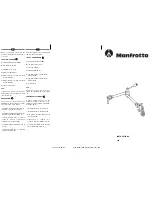
2 Installation
2.1 Mount the Device
1. If a bracket is needed, mount the device onto the bracket.
2. Mount the device (or the device and the bracket) to the machine or equipment at the desired location. Do not tighten
the mounting screws at this time.
3. Check the device alignment.
4. Tighten the mounting screws to secure the device (or the device and the bracket) in the aligned position.
2.2 Wiring Diagrams
Follow the wiring diagram that is appropriate for your application.
Opposed-Mode Models: The following wiring diagrams apply to the receivers. The three wiring diagrams that include
remote input apply to the emitters.
IO-Link with PNP Output (Factory Default)
4
1
3
2
10-30V dc
CH1
CH2
+
–
PUSH-PULL
Load
Load
Figure 1. Channel 1 = IO-Link, Channel 2 = PNP Output
IO-Link with PNP Remote Input
4
1
3
2
10-30V dc
CH1
CH2
+
–
PUSH-PULL
Load
Remote
Input
Figure 2. Channel 1 = IO-Link, Channel 2 = PNP Remote
Input
Key
1. Brown
2. White
3. Blue
4. Black
3
Note: NPN/PNP and Remote Input configurations are programmable using IO-Link.
Note: Enable the remote input wire function using IO-Link. The default for the remote input wire
function is Detection Output.
NPN Discrete Outputs
4
1
3
2
10-30V dc
CH1
CH2
+
–
Load
Load
Figure 3. Channel 1 = NPN Output, Channel 2 = NPN Output
PNP Discrete Outputs
4
1
3
2
10-30V dc
CH1
CH2
+
–
Load
Load
Figure 4. Channel 1 = PNP Output, Channel 2 = PNP Output
3
Opposed-Mode Models: IO-Link only on emitters.
WORLD-BEAM QS18 Expert with IO-Link
6
www.bannerengineering.com - Tel: + 1 888 373 6767







































